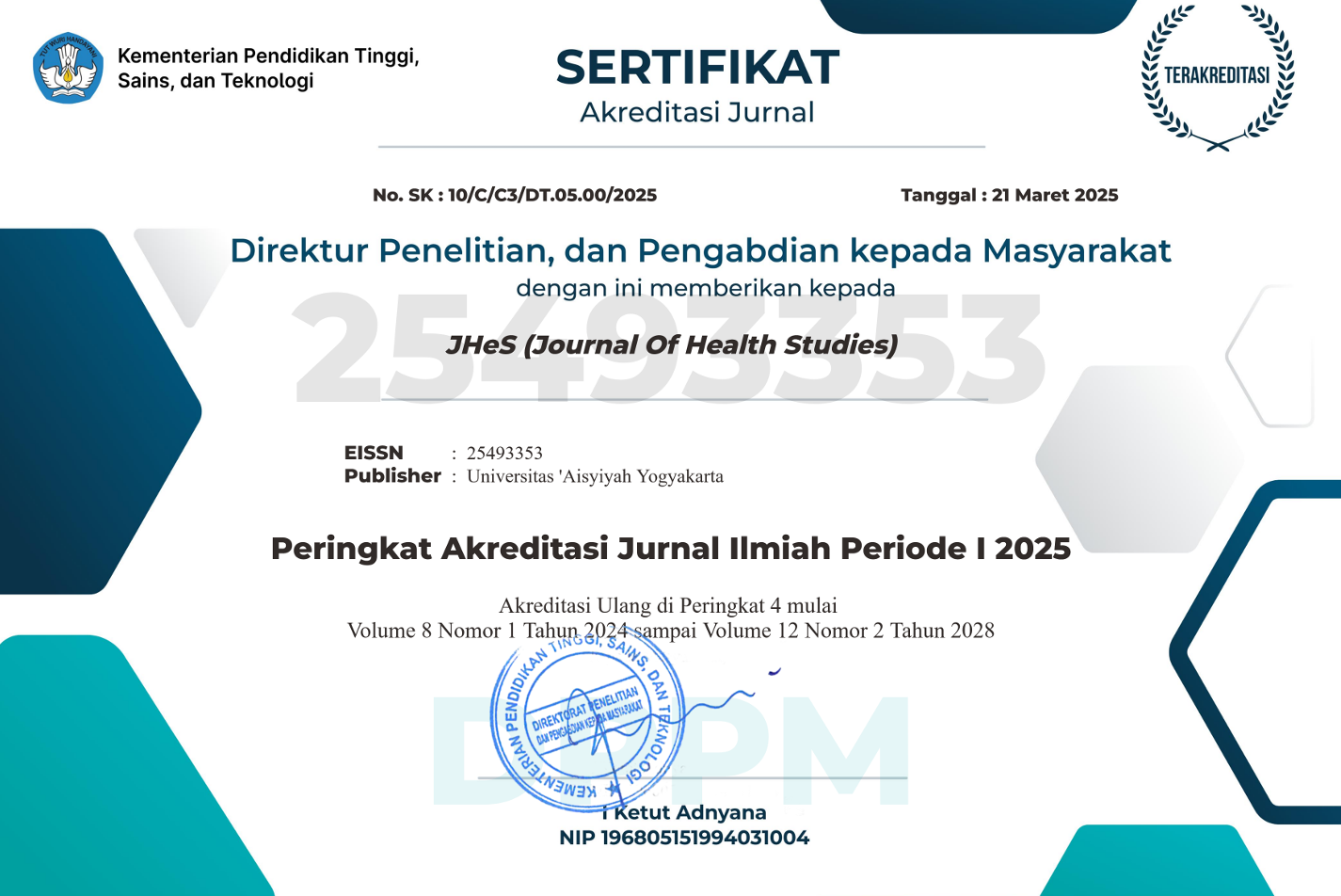Acute kidney injury as a prognostic factor in traumatic brain injury: rotterdam score association
DOI:
https://doi.org/10.31101/jhes.4207Abstract views 146 times
Keywords:
acute kidney injury, length of stay, outcome, rotterdam score, traumatic brain injuryAbstract
Downloads
References
Barea-Mendoza, J.A., Chico-Fernández, M., Quintana-Díaz, M., Serviá-Goixart, L., Fernández-Cuervo, A., Bringas-Bollada, M. et al. (2022). Traumatic Brain Injury and Acute Kidney Injury - Outcomes and Associated Risk Factors. Journal of Clinical Medicine, Vol 11, no. 23: 7216. https://doi.org/10.3390/jcm11237216
Cáceres, E., Olivella, J.C., Di Napoli, M., Raihane, A.S. and Divani, A.A. (2024) ‘Immune Response in Traumatic Brain Injury.’, Current neurology and neuroscience reports, 24(12), pp. 593–609. Available at: https://doi.org/10.1007/s11910-024-01382-7.
Charry, J. D., Falla, J. D., Ochoa, J. D., Pinzón, M. A., Tejada, J. H., Henriquez, M. J., Solano, J. P., & Calvache, C. (2017). External Validation of the Rotterdam Computed Tomography Score in the Prediction of Mortality in Severe Traumatic Brain Injury. Journal of neurosciences in rural practice, 8(Suppl 1), S23–S26. https://doi.org/10.4103/jnrp.jnrp_434_16
Chen, L., Zhao, J., Lu, L., Gong, Z., Xu, S., Yang, X., Zhang, Y., & Feng, X. (2024). Association between normal saline infusion volume in the emergency department and acute kidney injury in heat stroke patients: a multicenter retrospective study. Renal failure, 46(1), 2294151. https://doi.org/10.1080/0886022X.2023.2294151
De Vlieger, G., & Meyfroidt, G. (2023). Kidney Dysfunction After Traumatic Brain Injury: Pathophysiology and General Management. Neurocritical care, 38(2), 504–516. https://doi.org/10.1007/s12028-022-01630-z
Gist, K.M., Mack, E., Rahman, A.K.M.F., Basu, R.K., Alten, J.A., Soranno, D.E., Soohoo, M., Hock, K.M., Brinton, J.T. and Borasino, S. (2021) ‘Transient and persistent acute kidney injury phenotypes following the Norwood operation: a retrospective study.’, Cardiology in the young, 32(4), pp. 564–571. Available at: https://doi.org/10.1017/s1047951121002560.
Gupte, R., Brooks, W., Vukas, R., Pierce, J., & Harris, J. (2019). Sex Differences in Traumatic Brain Injury: What We Know and What We Should Know. Journal of neurotrauma, 36(22), 3063–3091. https://doi.org/10.1089/neu.2018.6171.
Maas, A. I., Hukkelhoven, C. W., Marshall, L. F., & Steyerberg, E. W. (2005). Prediction of outcome in traumatic brain injury with computed tomographic characteristics: a comparison between the computed tomographic classification and combinations of computed tomographic predictors. Neurosurgery, 57(6), 1173–1182. https://doi.org/10.1227/01.neu.0000186013. 63046.6b.
Kellum, J. A., Lameire, N., & Aspelin, P. (2021). Kidney Disease: Improving Global Outcomes (KDIGO) clinical practice guideline for acute kidney injury. Kidney International Supplements, 11(1), 1–115. https://doi.org/10.1016/j.kisu.2020.12.001
Lopes, J. A., & Jorge, S. (2013). The RIFLE and AKIN classifications for acute kidney injury: a critical and comprehensive review. Clinical kidney journal, 6(1), 8–14. https://doi.org/10.1093/ckj/sfs160
Posti, J.P., Maas, A.I.R., Orešič, M., Menon, D.K., Czeiter, E. and Steyerberg, E.W. (2022) ‘Serum metabolome associated with severity of acute traumatic brain injury’, Nature Communications, 13(1). Available at: https://doi.org/10.1038/s41467-022-30227-5.
Robba, C., Meyfroidt, G., Iaquaniello, C., Banzato, E., Wiegers, E.J.A., Huang, C.-Y., Citerio, G. and Rebora, P. (2020) ‘Acute Kidney Injury in Traumatic Brain Injury Patients: Results From the Collaborative European NeuroTrauma Effectiveness Research in Traumatic Brain Injury Study.’, Critical Care Medicine, 49(1), pp. 112–126. Available at: https://doi.org/10.1097/ccm.0000000000004673
Rosyidi, R. M., Priyanto, B., Laraswati, N. K. P., Islam, A. A., Hatta, M., Bukhari, A., Wardhana, D. P. W. 2019. Characteristics and clinical outcome of traumatic brain injury in Lombok, Indonesia. Interdisciplinary Neurosurgery, 18, 100470. https://doi.org/10.1016/j.inat.2019.04.015
Taylor, S. V., Loo, G. T., Richardson, L. D., & Legome, E. (2024). Patient Factors Associated With Prolonged Length of Stay After Traumatic Brain Injury. Cureus, 16(5), e59989. https://doi.org/10.7759/cureus.59989
Wang, R., Zhang, J., Xu, Jing, He, M. and Xu, Jianguo (2021) ‘Incidence and Burden of Acute Kidney Injury among Traumatic Brain-Injury Patients.’, Risk management and healthcare policy, 14(2), pp. 4571–4580. Available at: https://doi.org/10.2147/rmhp.s335150.
Wang, R., Zhang, J., Xu, J. and He, M. (2024) ‘Classification and Regression Tree Predictive Model for Acute Kidney Injury in Traumatic Brain Injury Patients.’, Therapeutics and Clinical Risk Management, 20, pp. 139–149. Available at: https://doi.org/10.2147/tcrm.s435281.
Yue, J.K., Krishnan, N., Chyall, L., Haddad, A.F., Vega, P., Caldwell, D.J., Umbach, G., Tantry, E., Tarapore, P.E., Huang, M.C., Manley, G.T. and Digiorgio, A.M. (2022) ‘Predictors of Extreme Hospital Length of Stay After Traumatic Brain Injury’, World neurosurgery, 167, pp. e998–e1005. Available at: https://doi.org/10.1016/j.wneu.2022.08.122.
Downloads
Published
Issue
Section
License
Copyright (c) 2025 JHeS (Journal of Health Studies)

This work is licensed under a Creative Commons Attribution-ShareAlike 4.0 International License.
With the receipt of the article by the Journal of Health Studies Editorial Board and the decision to be published, then the copyright regarding the article will be diverted to Journal of Health Studies. Universitas 'Aisyiyah Yogyakarta as the publisher of Journal of Health Studies hold the copyright regarding all the published articles in this journal.
Journal of Health Studies is licensed under a Creative Commons Attribution-ShareAlike 4.0 International License.













